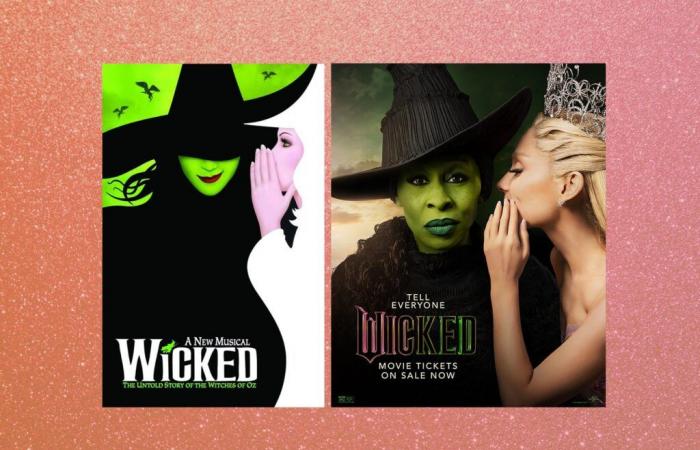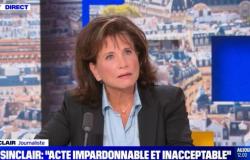The first thing you need to understand about the new movie version of Wicked is that, despite being only Part I of a two-part adaptation, it is in fact lengthier than the entire blockbuster stage musical on which it is based. At two hours and 40 minutes, it’s about 10 minutes longer than the original, two-hour-and-30-minute Broadway musical—the actual run time, if you exclude the show’s typical 15-minute intermission. The movie does not itself slot in time for such an intermission (this ain’t the ’60s), but it ends right at the plot point that serves as the musical’s famed Act 1 finale: “Defying Gravity,” the song belted by an unjustly persecuted Elphaba as she finally rides off into the skies on her broom, destined to be forever vilified as the Wicked Witch of the West. You could be forgiven for not realizing that this is all just Part Igiven that the marketing has tended to advertise it as simply Wicked. But even as an adaptation of the show’s first act, which usually clocks in at 90 minutes, it nearly doubles the length. That’s a lot of Wickedbut here’s a surprise—it actually kinda works, so far, and I’m very much in line with my colleague Dana Stevens’ rave.
In the years leading up to Part I’s release, a flurry of news stories teased all sorts of new goodies to be included in the film: additional songs from composer Stephen Schwartz (likely to be featured in Part Twoout next November), more plotlines and details from the eponymous 1995 novel that inspired the musical, and various “added elements” to the beloved songs. But how exactly does that contribute to a Part I that’s a whole hour longer than Wicked’s first act? We break it down below.
The Plot
Wicked: Part I makes the smart decision not to add many side plots. Instead, it uses much of the added run time to deepen its main characters—and the complex relationships between them. This begins right from the moment of Glinda’s opening flashback, as she recounts Elphaba’s unfortunate upbringing. The out-of-wedlock baby, born with green skin and subsequently spurned by her parents, is then shown to be raised mostly by a nanny bear (voiced by three-time Olivier Award winner Sharon D. Clarke), who never appears in the show. The movie also changes how she ends up at Shiz University, to further accentuate her place as a neglected outcast in the family. In the musical, Elphaba and her sister Nessarose (Marissa Bode) enroll at Shiz together, but in the movie, just Nessarose is slated to attend; it’s only after their father (Andy Nyman) pushes Elphaba to ensure that Nessarose makes it to her dorm safely that Elphaba follows her to a campus gathering spot and ends up with an unexpected invitation to the school. That comes about when, in a moment of worry and panic, she casts a spell that lifts Nessarose into the air and carries many surrounding objects with her, causing a huge mess and embarrassing Nessarose, who rolls away in a huff. Shiz headmistress Madame Morrible (Michelle Yeoh) witnesses this and, impressed, not only admits Elphaba to the school but also offers to give her private magic lessons—sessions we see throughout the film, though they’re never shown in the musical. (In the show, Elphaba merely pulls Nessarose’s wheelchair away from Madame Morrible, who then gets Glinda to room with Elphaba.)
We also see more of the oppressed, talking animals at Shiz University. In the musical’s first act, the goat professor Dr. Dillamond (voiced by Peter Dinklage) is the primary animal character.
There’s more of him here, and more of his animal colleagues, including a tamarin monkey, an owl, a deer, and a shoebill. The “Something Bad” sequence, originally just a classroom-set duet between Elphaba and Dillamond, becomes a mostly solo song for the latter in an added scene, where we see him meeting with other animals to discuss Oz’s escalating discrimination against its nonhuman residents. Elphaba sneaks outside their meeting space and eavesdrops but is eventually noticed and welcomed in by Dillamond. Another new bit involving Dillamond: A film-only character, Miss Coddle (The Greatest Showman’s Keala Settle), is portrayed as a Dolores Umbridge–style heel who forces Dillamond from the university, as Oz further expels its animal populations from public life.
Another character who gets a bit more shine during this midsection: Fiyero (Bridgerton’s Jonathan Bailey), the shared romantic interest between Glinda and Elphaba. After Dillamond is fired, the new rules for how animals will be treated at Shiz are made clear when a new professor wheels in a lion cub (the future Cowardly Lion) in a cage. In the musical, Elphaba erupts in rage on the spot, and she runs away with Fiyero while bringing the cub with them; in the movie, Elphaba hatches a separate plan with Fiyero outside of class to sneak into the classroom, take the cub, and free him in the surrounding woods, where Fiyero and Elphaba have just so happened to first meet a few scenes back. (In the show, their first encounter is on Shiz’s campus.)
Part I’s climax is also elongated and given more of the action audiences might expect from a Hollywood finale. It kicks off with Glinda and Elphaba’s visit to the Wizard of Oz (Jeff Goldblum), who explains his vision for a fancy brick road; the young witches settle on yellow as a suitable color, a lore-building moment absent from the stage production. The subsequent escape sequence doesn’t make a rush of things, showing Glinda and Elphaba failing to take the Wizard’s hot-air balloon out of his castle (a plot point that doesn’t occur in the show) and the latter struggling to fly at first before mastering her skill and taking control of her broom. In the show, she takes off pretty much immediately. The song that plays throughout that stirring event (you know, “Defying Gravity”) is stretched out to accommodate the changes, which brings us to …
The Songs
Wicked: Part I doesn’t include any new musical numbers, but the beloved songs are all given significant flourishes, and Fiyero’s “Dancing Through Life” gets an extra-special boost. Although the musical stages that song at the party where Elphaba and Glinda finally cement their friendship, Jon M. Chu, who made his name as the director of the Step Up movies, gives “Dancing” much more bombast, lengthening the song, slowing its rhythm, and placing the choreography in various cinematic settings, a giant rotating library among them. (For a general idea of how the movie’s soundtrack diverges from the cast recording, just compare the corresponding track lengths—many of the film’s versions are at least a minute or two longer.)
I’ve mentioned the reasons why “Something Bad” and “Defying Gravity” are longer than expected, but “One Short Day,” the catchy ballad that soundtracks Elphaba and Glinda’s trip to the Emerald City, is also given an extra job: Several lines are added to explain the Grimmeriea mystical spellbook owned by the Wizard (and later read by Elphaba, when casting the spell that gets a monkey to painfully sprout new wings). The stage version, as Wicked fans well know, is more narrowly focused on the awe-inspiring wonders of the Emerald City. If the conventions of modern big-budget filmmaking require a bit more of an exposition dump, I suppose you might as well do it in song.






